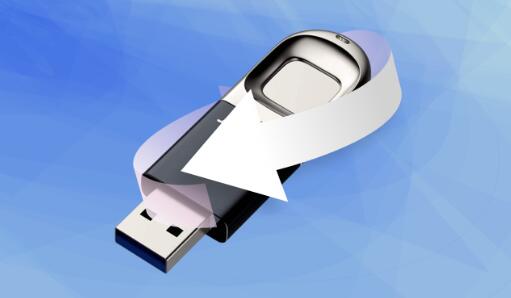Have you ever experienced the panic of realizing that files you thought were safely stored on your flash drive have vanished into the digital ether? You’re not alone. Many users face the harrowing dilemma of lost data, often wondering if recovery is possible.
The good news is that, in many cases, you can retrieve deleted files from a flash drive. Understanding how data deletion works, the recovery options available, and the best practices to prevent future loss can be invaluable.
Before diving into recovery methods, it’s crucial to understand how data deletion functions at a technical level. When you delete a file from a flash drive, it’s not immediately erased. Instead, the operating system marks the space previously occupied by the file as available for new data. The file remains in a sort of digital limbo until that space is overwritten by new data. This means that if you act quickly and the deleted files haven’t been overwritten, there’s a good chance of successful recovery.

Factors Influencing Recovery
Several factors influence the likelihood of recovering deleted files from a flash drive:
Time: The sooner you attempt recovery after deletion, the better your chances. The more you use the flash drive, the higher the risk of overwriting the deleted data.
Type of Deletion: Files deleted using the “Delete” function may be easier to recover than those removed via formatting. Full formatting typically erases the file structure, making recovery more complex.
Device Condition: Physical damage or malfunctioning can hinder recovery efforts. A malfunctioning flash drive may require professional intervention.
Software Tools: The effectiveness of the data recovery software you choose can greatly impact your recovery success.
Recovery Options
When it comes to recovering deleted files from a flash drive, there are several approaches you can take:
Check the Recycle Bin: If you’ve recently deleted files, check your computer’s Recycle Bin. Sometimes, when files are deleted from a flash drive while connected to a computer, they may temporarily be stored there.
Use File Recovery Software: Many specialized software options can help you recover deleted files. Programs like Recuva, EaseUS Data Recovery Wizard, and Disk Drill can scan your flash drive for recoverable data. These tools often provide step-by-step guides, making the recovery process more manageable.
Backup Services: If you regularly back up your files, check your backup services. Tools like Google Drive, Dropbox, or dedicated backup software may have the deleted files stored.
Command Prompt: For those comfortable with command-line interfaces, the Command Prompt can sometimes help recover lost files. Using commands like attrib can reveal hidden files, though this method may not always work for deleted files.
Professional Data Recovery Services: If you’ve tried the above methods without success, consider enlisting the help of professional data recovery services. While often more expensive, these services have specialized tools and expertise that can significantly improve your chances of recovery, especially in cases of physical damage.
Best Practices to Prevent Data Loss
Prevention is always better than cure. Here are some best practices to minimize the risk of losing data on your flash drive:
Regular Backups: Always back up important files to multiple locations. Utilize cloud storage, external hard drives, or other media to ensure your data is safe.
Safely Eject the Drive: Always use the “Eject” option before removing your flash drive from a computer. This ensures that all data transfers are complete and can help prevent corruption.
Monitor Drive Health: Regularly check your flash drive for errors. Use built-in tools like Windows’ Check Disk utility to identify and rectify potential issues before they lead to data loss.
Organize Files: Keep your flash drive organized to avoid accidental deletions. Create separate folders for different types of data to reduce the chances of mishaps.
About us and this blog
Panda Assistant is built on the latest data recovery algorithms, ensuring that no file is too damaged, too lost, or too corrupted to be recovered.
Request a free quote
We believe that data recovery shouldn’t be a daunting task. That’s why we’ve designed Panda Assistant to be as easy to use as it is powerful. With a few clicks, you can initiate a scan, preview recoverable files, and restore your data all within a matter of minutes.

 Try lt Free
Try lt Free Recovery success rate of up to
Recovery success rate of up to









